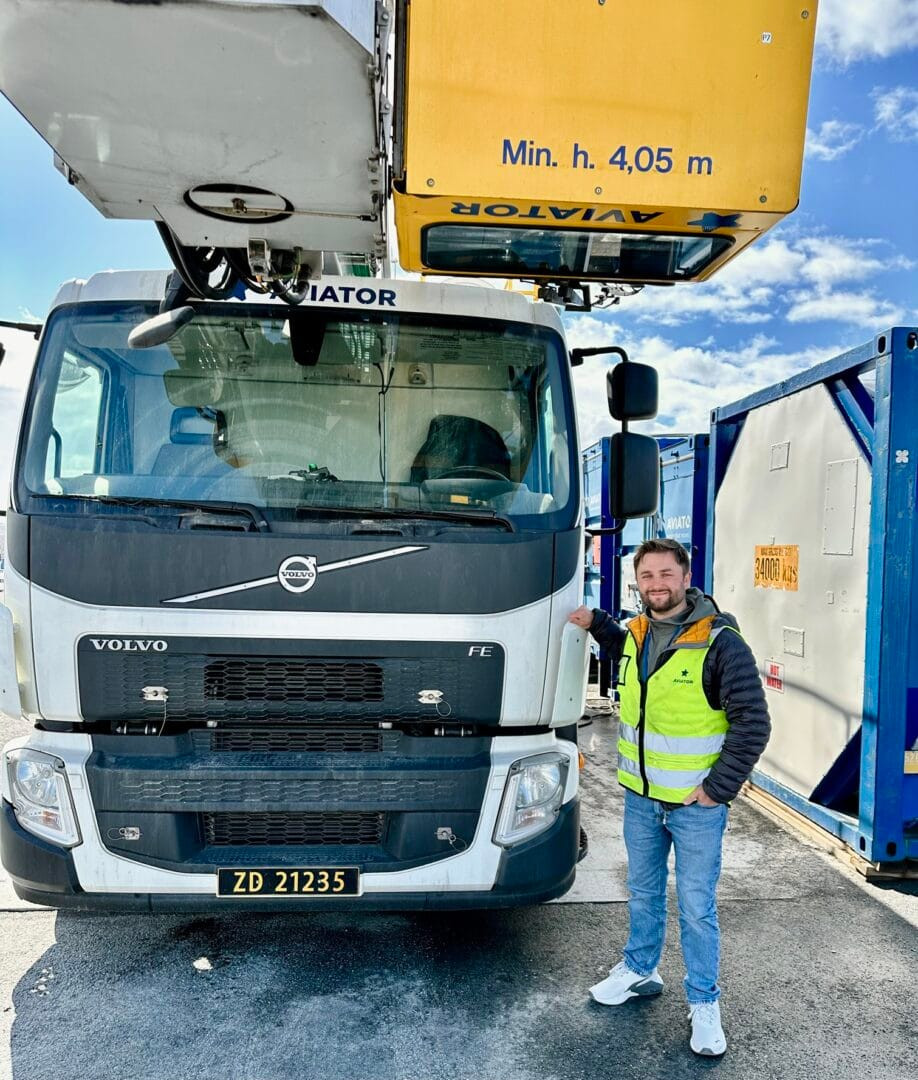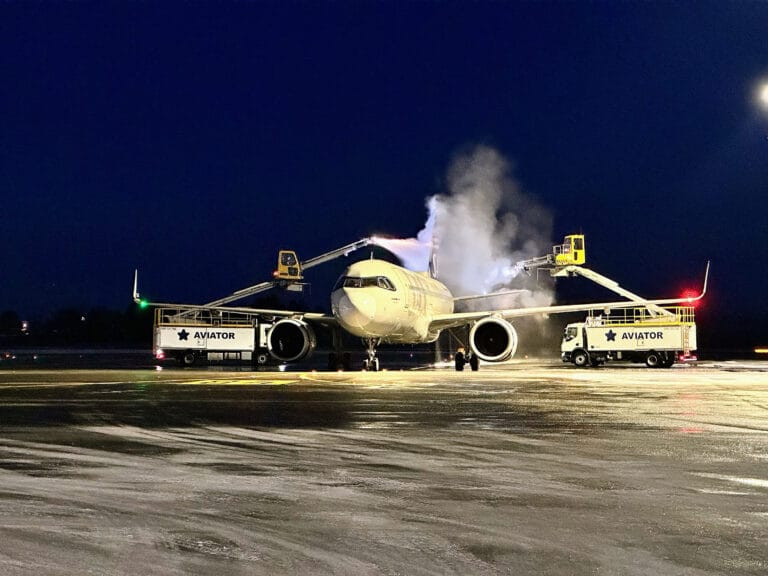- Aviator Airport Alliance emphasises safety and flexibility in Nordic de-icing operations, using tailored procedures, seasonal training, and real-time coordination to manage variable winter conditions across northern and southern stations.
- Standardisation is balanced with local adaptation through SAE-aligned manuals, staff rotations, and an internal De-icing Working Group that scales solutions across diverse airports while incorporating feedback and seasonal insights.
- Sustainability is integrated into operations via higher-concentration Type I fluids, electric ground support equipment where possible, and location-specific fluid recycling, with early planning and coordination highlighted as key to safe, efficient, and greener winter operations.
As winter weather patterns grow more erratic across Northern Europe, the operational demands of aircraft de-icing have become more than a logistical exercise – they’re now a critical, safety-first discipline under increasing pressure from climate variability, infrastructure constraints and sustainability goals.
De-icing is not a uniform procedure, and the Nordic region’s climate demands flexibility and precision. “Nordic winters are variable, and station conditions differ widely,” Anders Søreide, Head of De-ice & Safety Advisor at Aviator Airport Alliance, explained. At far northern stations, the de/anti-icing season may begin as early as August and stretch into June, while more southerly airports may only see a few months of winter conditions.
That unpredictability makes preparation critical. Aviator brings together its instructors each autumn to review reports and flight safety events from the previous year, updating training accordingly. The approach is rooted in a “just culture” model, where frontline teams are encouraged to report candidly. “This learning loop is reinforced so frontline teams feel safe to report and discuss what really happened,” said Søreide.
That ethos extends into day-of operations, particularly when airports face peak demand. “We’re the last line of defence before take-off,” he said. Sequencing, fluid type, and coordination with air traffic control are tightly managed to minimise holdover time risks and maintain consistency. “Efficiency comes from early coordination and planning with airports and flight crews, disciplined sequencing, and prepared operators.”
Local challenges, regional standards
Despite the shared safety baseline, local adaptations remain essential. Søreide notes that infrastructure, weather, and traffic patterns vary even within the same country, so standardised practices don’t always translate well between stations. “While all our stations follow the same industry standards, procedures are adjusted to fit local infrastructure, weather, and operational specifics.” he said.
To maintain coherence across such a diverse network, Aviator grounds its de-icing manual and training content in the latest industry standards, which are updated annually. Practical training is central to the approach, including staff rotations to busier northern stations, reinforcing a shared operational mindset.

Aviator Airport Alliance also chairs an internal De-icing Working Group, chaired by the company’s Head of De-icing and composed of representatives from all Aviator regions. The group works to align procedures across sites and incorporate insights from customer feedback, seasonal reviews, and industry forums. “We use this diversity to test solutions in one environment, then scale or adapt them elsewhere,” Søreide said.
Greener De-icing
With airport decarbonisation efforts accelerating, de-icing operations are now under scrutiny for their environmental footprint. The primary focus areas are glycol consumption, energy usage of ground support equipment (GSE), and fluid recycling – all of which are constrained by local infrastructure realities.
Aviator has moved to a new Type fluid formulation with higher glycol concentration, allowing a greater water mix without compromising safety. “It supports both performance and environmental goals while also likely reducing transport needs from tank facilities,” said Søreide.
Equipment is also evolving. “We prioritise electric and sustainable GSE wherever infrastructure allows,” he said. While standard GSE like baggage tractors and pushbacks are increasingly electric, the rollout of electric de-icers remains limited by facility readiness. “Electric deicers are emerging but often require infrastructure upgrades, which we pursue with airport operators.”
Fluid recycling, meanwhile, remains location-dependent. At Stockholm, Aviator operates vacuum trucks to collect used fluid for treatment by the airport authority – a system Søreide would like to replicate, but only where conditions allow. “Even within the same country, facilities and airport operators differ widely.”
As the industry looks toward the 2025–2026 winter season, Søreide has a clear message: plan early, communicate often. He encourages airport and airline partners to engage proactively on staffing, fleet readiness, and infrastructure upgrades. “Electric deicers and robust fluid collection systems require both airport and customer support – early coordination may avoid bottlenecks mid-season.”
Above all, he urges stakeholders to keep flight safety central. “De/anti-icing is your last flight safety barrier before take-off. The more we collaborate on standards, training and sustainability, the safer and more efficient your winter operation will be.”





